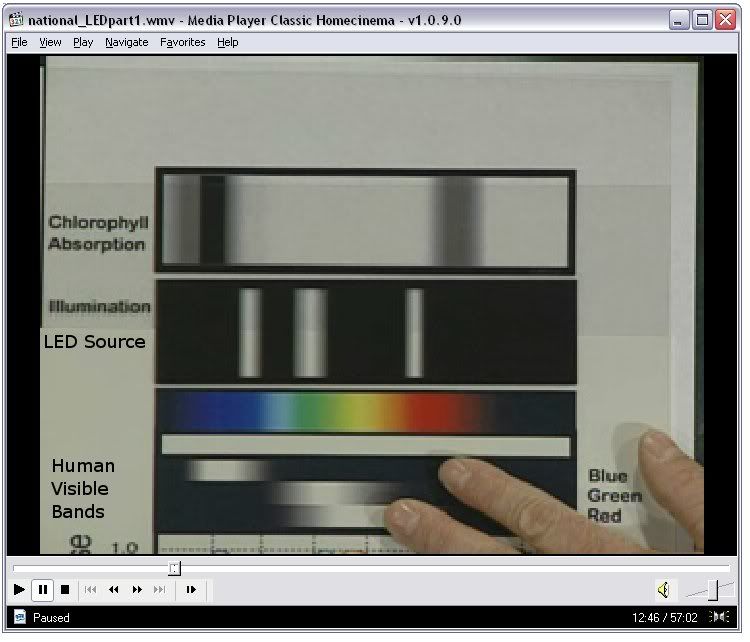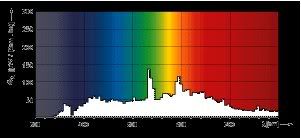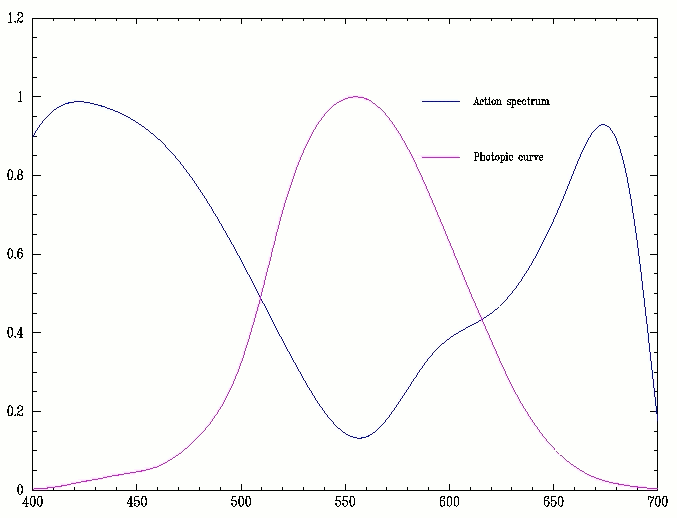This may be beating a dead horse... but LEDs are about the worse source of light for plants you can get.
1) They are NOT efficient, they only manage 40-50 lumens per watt. Florescents and HIDS are in the 80-120 range.
2) LEDs do not put out light in the chlorophyll absorpbtion bands... i.e. the light LEDs put out are very narrow banded and useless to plants. White LEDs are also fairly useless because the blue is too high in the spectrum, and they fade out before reaching the red spectrum chlorophyll requires.
Here we see a graph produced by National Semiconductor guest speaker from Future LEDs, with Philips Lumileds representative, and a nat semi engineer all in concurrence.
The top part is the absorption bands of chlorophyll, black is where the light NEEDs to be to be useful to plants. You can correlate that to the color chart below.
The second section is the emission spectrum of Blue 470nm, green 525nm, and red 630nm LEDs... You can see clearly that all of the light output of LEDs falls TOTALLY outside the range of chlorophyll absorption.
Next section is the color chart, fairly self explanatory.
The bottom section is our color receptors each respectively, Blue, Green, and Red which over lap... LEDs are useful for human vision, but their narrow peaks make them useless for the purpose of growing plants.
If you want to see the entire presentation, please go here (you must register, but don't worry they're good about not giving out addresses):
Analog By Design Show 6

LEDs are wonderful for lots of things... Plants are not one of them.


































 Linear Mode
Linear Mode


